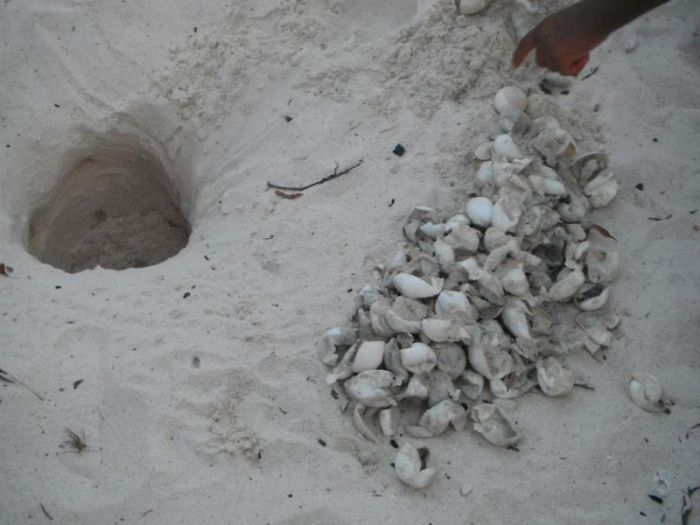|
|
Loggerhead Sea Turtle Hatchlings Guided To The Sea
|
Carolus Linnaeus gave the loggerhead its first binomial name, Testudo caretta, in 1758. Thirty-five other names emerged over the following two centuries, with the combination Caretta caretta first introduced in 1902 by Leonhard Stejneger. The English common name "loggerhead" refers to the animal's large head. The loggerhead sea turtle belongs to the family Cheloniidae, which includes all sea turtles except the leatherback sea turtle. The subspecific classification of the loggerhead sea turtle is debated, but most authors consider it a single polymorphic species. Molecular genetics has confirmed hybridization of the loggerhead sea turtle with the Kemp's ridley sea turtle, hawksbill sea turtle, and green sea turtles. The extent of natural hybridization is not yet determined; however, second-generation hybrids have been reported, suggesting some hybrids are fertile.
• Evolutionary history
Although evidence is lacking, modern sea turtles probably descended from a single common ancestor during the Cretaceous period. Like all other sea turtles except the leatherback, loggerheads are members of the ancient family Cheloniidae, and appeared about 40 million years ago. Of the six species of living Cheloniidae, loggerheads are more closely related to the Kemp's ridley sea turtle, olive ridley sea turtle, and the hawksbill turtle than they are to the flatback turtle and the green turtle.
Around three million years ago, during the Pliocene epoch, Central America emerged from the sea, effectively cutting off currents between the Atlantic and Indo-Pacific Oceans. The rerouting of ocean currents led to climatic changes as the Earth entered a glacial cycle. Cold water upwelling around the Cape of Good Hope and reduction in water temperature at Cape Horn formed coldwater barriers to migrating turtles. The result was a complete isolation of the Atlantic and Pacific populations of loggerheads. During the most recent ice age, the beaches of southeastern North America were too cold for sea turtle eggs. As the Earth began to warm, loggerheads moved farther north, colonizing the northern beaches. Because of this, turtles nesting between North Carolina and northern Florida represent a different genetic population from those in southern Florida.
|
|









